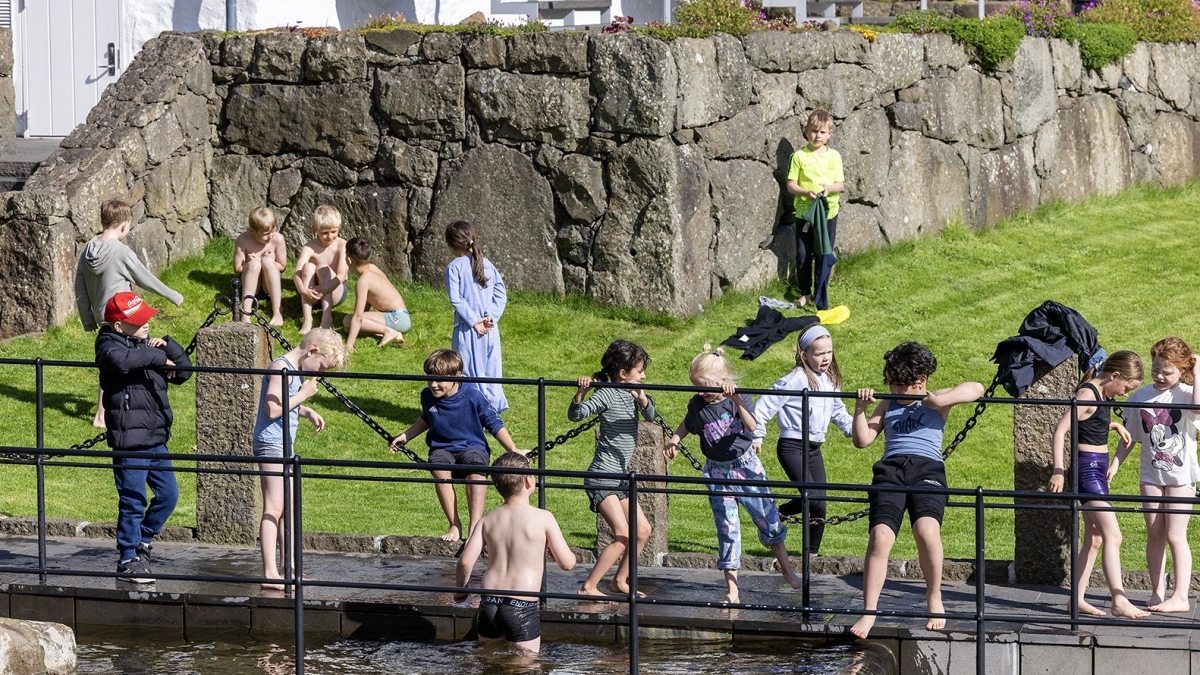Population
10. Sep 2024
Population surpasses 54,900

The Faroese population increased by 296 people in the past year, reaching 54,908 on 1 August. This year-on-year growth of 0.5% is the lowest annual growth rate since the population growth began a decade ago.
The population growth is continuing, but the growth is on a steady decline. The 0.5% growth from 1 August 2023 to 1 August 2024 is only half of the figure for the previous 12-month period. The main reason for the slower growth is that net migration dropped by half in the past year. The graph below shows the Faroese population trend since 1985.
[px-graph-1]
The population trend is determined by net migration, i.e. the difference between the number of immigrants and the number of emigrants, and the excess of live births over deaths. The population growth in the Faroes in the past year was driven by an excess of births of 129 people and a net migration figure of 167 people.
Both of these figures declined compared to the previous year, with fewer births and a reduction in net migration due to a decrease in the number of immigrants.
Fewer non-Danish immigrants
Grouping migration by citizenship, we see the largest decrease in net migration among non-Danish citizens, primarily driven by a reduction in immigration by non-Danish citizens.
There was a relatively balanced decline in both immigration and emigration for Danish citizens, resulting in little change to net migration compared to the previous year. For the past three years, net migration among Danish citizens has been negative. Consequently, the positive net migration figure, which has contributed to population growth, is entirely attributable to non-Danish citizens.
The table below shows migration figures by residency status in the past five 12-month periods.
Declining migration
The graph below illustrates a significant drop in net migration, primarily due to a more pronounced decline in immigration compared to emigration.
[px-graph-2]
Fewer births
The graph below shows the monthly trends for births and deaths. While the trend for deaths has stabilised, the trend for births is on a steady decline.
[px-graph-3]
Population in municipalities, towns and villages
Tórshavn, Klaksvík, Nes and Eystur municipalities had the biggest population growth in the past year. The towns with the biggest annual growth are Tórshavn, Klaksvík, Hoyvík and Toftir.
Strendur, Syðrugøta, Saltangará and Skopun also experienced significant population growth.
The table below shows the population across all 29 municipalities, with details for each town and village, on 1 July 2023 and 1 July 2024. Further details for each individual town and village are available here.
[px-graph-4]
Population in municipalities, towns and villages
Of the 29 municipalities, Tórshavn, Klaksvík, Nes and Vágar municipalities had the highest population growth. The towns or cities with the largest growth were Tórshavn, Klaksvík, Hoyvík and Strendur. The biggest population decline was registered in Sunda, Eiði and Vágur municipalities.
Sandoy had population growth in all municipalities except Sandur. Notably, Húsavík municipality saw an increase of 10 people in the past year.
The table below shows the population across the 29 municipalities, with details for each town and village, on 1 August 2023 and 1 August 2024. More details about population trends are available here.
[px-graph-5]
Population figures have a one-month lag
The figures have a one-month lag due to delays in registrations, especially regarding address changes, where many registrations are made after the month of address change has ended. To accommodate as many corrections as possible, there is a one-month lag in the data.
About the population figures
The population is defined as all individuals registered in the national register as residents of the Faroe Islands. Population data includes date of birth, gender, place of birth, citizenship, relationship status, and, where applicable, information on immigration and emigration, domestically as well as between the Faroe Islands and other nations.
About the trend
The trend describes the population trend by adjusting for seasonal effects and other error components in the population figure.